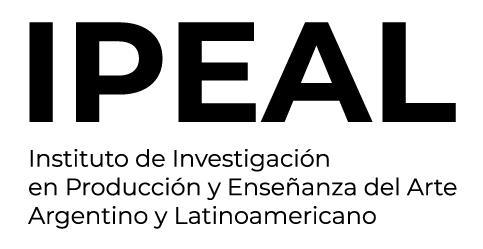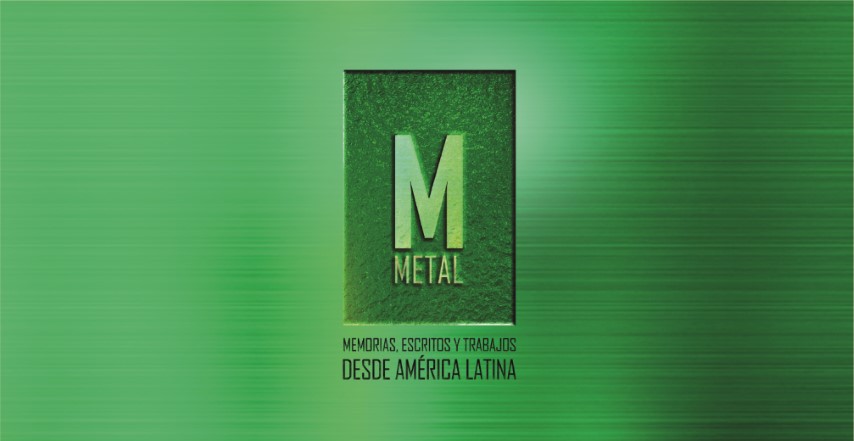Poetics of Saying
Textuality and Presence in the Works of Ana Gallardo
DOI:
https://doi.org/10.24215/24516643e027Keywords:
Contemporary art, testimony, biography, writing strategies, performative turnAbstract
This article analyses the strategies that the argentinian artist Ana Gallardo implements in relation to the use of biographical testimony as a poetic device. To that end, I will analyse two artworks which ascribe to this methodology and recognize an inscription in processes of production which involve writing strategies (Baeza, 2013), where the word is also used as plastic-art material, which operates within a double dimension of content-formReferences
Alcázar, J. (2014). Performance: un arte del yo. Autobiografía, cuerpo e identidad. Ciudad de México, México: Siglo Veintiuno.
Baeza, F. (2013). Escrituras de la vida cotidiana. Caiana. Revista de Historia del arte y Cultura Visual del Centro Argentino de Investigadores de Arte (CAIA), (2). Recuperado de http://caiana.caia.org.ar/resources/uploads/2-pdf/FedericoBaeza.pdf
Cornago, Ó. (2015). Sobre el mito de la acción y las acciones mínimas. En J. Albarrán e I. Estella (Eds.), Llámalo performance: historia, disciplina y recepción (pp. 141-186). Madrid, España: Brumaria.
Gallardo, A. (2015). Ana Gallardo. Un lugar para vivir cuando seamos viejos / Entrevistada por Gabriela Cabezón Cámara [Catálogo de la exposición]. Ciudad Autónoma de Buenos Aires, Argentina: Ministerio de Cultura del Gobierno de la Ciudad, Museo de Arte Moderno de Buenos Aires.
Goldsmith, K. (2015). Escritura no creativa. Gestionando el lenguaje en la era digital. Ciudad Autónoma de Buenos Aires, Argentina: Caja Negra.
Hang, B. y Muñoz, A. (2019). El tiempo es lo único que tenemos. Actualidad de las artes performativas. Ciudad Autónoma de Buenos Aires, Argentina: Caja Negra. Rivero, N. (24 de noviembre de 2018). El «negro absoluto» de Ana Gallardo. La Nación. Recuperado de https://www.lanacion.com.ar/cultura/el-negro-absoluto-ana-gallardo-nid2196017/
Valesini, M. S. y Valent, G. (2020). Muerte y renacimiento de una imagen: Óscar Muñoz y el giro performativo en las artes visuales. En De «A peste» o «Estrangeiro» ou as Arte em 2020: Atas do xi Congresso Internacional CSO, Criadores Sobre outras Obras (pp. 1311-1318). Lisboa, Portugal: Centro de Investigação e Estudos de Belas-Artes (CIEBA); Faculdade de Belas-Artes, Universidade de Lisboa. Recuperado de http://cso.belasartes.ulisboa.pt/atas.htm
Downloads
Published
How to Cite
Issue
Section
License
The acceptance of the manuscript by the magazine means the non-exclusive cession of the property rights of the authors in favour of the editor, who allows the reuse, after publication (post print), under a license Attribution-NonCommercial-NoDerivatives 4.0 International.
According to these terms, the material can be copied and redistributed by any means or in any format as long as a) the author and original source of the publication are quoted (magazine and URL of the work), access to the license is provided and whether changes have been made is mentioned; and b) the material is not used for commercial purposes.
The cession of non-exclusive rights means that after the publication (post print) in Metal the authors can publish their work in any language, means and format; in such cases it must be mentioned that the material was originally published in this magazine. Such cession also means the authorization of the authors for the work to be collected by SEDICI, the institutional archive of the Universidad Nacional de La Plata, and to be spread in the databases that the editorial team considers appropriate to increase the visibility of the publication and its authors.
Moreover, the magazine encourages the authors to deposit their productions in other institutional and thematic archives under the principle that offering the society the scientific and academic production without any restrictions contributes to a greater exchange of the global knowledge.



























